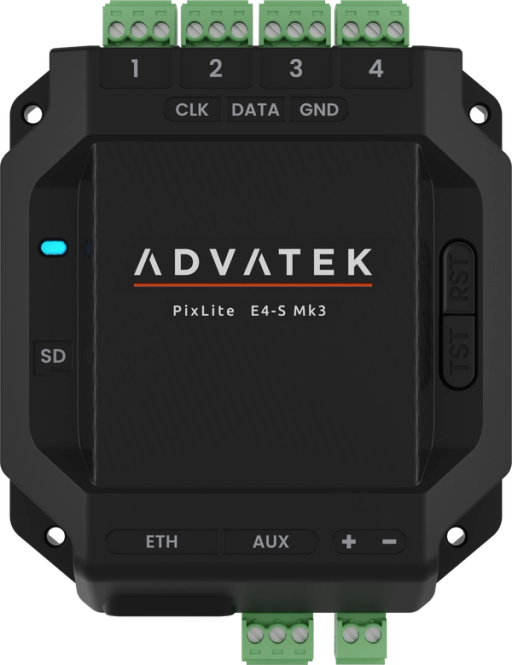
Mighty processing power, great price
The PixLite® Mk3 E-Series pixel controllers are easily the most cost-efficient commercial grade pixel controllers in the world.
Representing the pinnacle of over ten years of engineering experience, we have created a series of controllers that deliver on performance without breaking your budget.
The PixLite® E-series is an economical, but powerful series of pixel LED controllers built upon Advatek’s 3rd generation PixLite® Mk3 processor. Our ground-breaking Mk3 processor uses sophisticated 3rd generation firmware that provides the commands, logic and complex calculations to enable the device to drive the world’s most amazing lighting displays.
As the global semiconductor shortage continues to drive the price of pixel controllers up, our engineers have worked to offset these high costs with the innovative design of the E-series, which represents the best features of the A-series controllers at a price that will suit almost every installation budget.
PixLite E Series vs PixLite A Series
Feature | PixLite E Series | PixLite A Series |
|---|---|---|
PixLite Mk3 Processor | ||
RGB Pixels per output | 1020 | 1020 |
Extreme Refresh Rates | Same processing capability as A Series | |
Web-based Management Interface | ||
microSD card slot for Advatek SHOWTime | ||
Pixels can be powered through PixLite | ||
Smart Electronic Fusing | ||
Voltage and Current Monitoring | ||
Ethernet Speed | 10/100 Mbit/s | Gigabit |
Number of Ethernet Ports | 1 | 2 |
Universe Data Hardware Firewall | ||
Cost | Approximately 20-30% less cost per output vs A Series |
|

